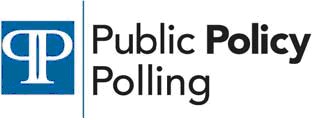John McCain is coming to Wilmington Monday less than a week after Sarah Palin visited Greenville last Tuesday. It's not surprising the Republican ticket is working hard to shore up its support east of I-95, because declining support there relative to 2004 for the party is one of the biggest reasons North Carolina is so competitive this fall.
According to the 2004 exit poll for North Carolina George W. Bush won a 60-40 victory in the eastern part of the state. This year the region is too close to call, with Barack Obama leading 47-46 there in an average of PPP's three most recent polls of the state.
With Obama likely to rack up huge majorities in the state's most populous counties, John McCain can't afford any outcome other than not just a win in the eastern part of the state, but a sizable one.
Obama's success in the eastern part of the state is emblematic of the strides he's made with small town voters throughout North Carolina. In 2004 George W. Bush won 57-43 with those voters, but Obama has a 47-44 advantage in those communities this time around.
New Hanover County will be a good bellwether on election night for what's going to happen statewide. In 2004 Bush won it 56-44. If it comes in early and shows Obama with a lead that will be a pretty good indication that he's going to fare well statewide. If McCain is able to maintain an advantage there in the ballpark of the 2004 Republican victory, it will be a sign that he may be able to hold on here.
Subscribe to:
Post Comments (Atom)




2 comments:
In 2004 I was one of the Democratic Party volunteers driving to each polling place in New Hanover County after voting ended. Based on those unofficial numbers that me and a few others scribbled on our lists, we thought we were going to a victory party that night. I’m not alleging that anything shady happened, but what was reported to us was a far cry from a 56-44 loss.
Tom,
Do you think it's a good idea to cite numbers from an exit poll we know is flawed?
Both of us have fought against those who use it to say black turnout was 24% in 2004. If you use it now, you're sending mixed messages on its validity.
Post a Comment